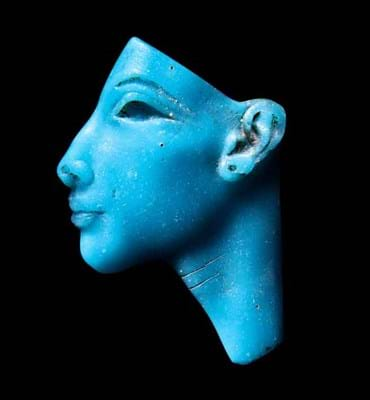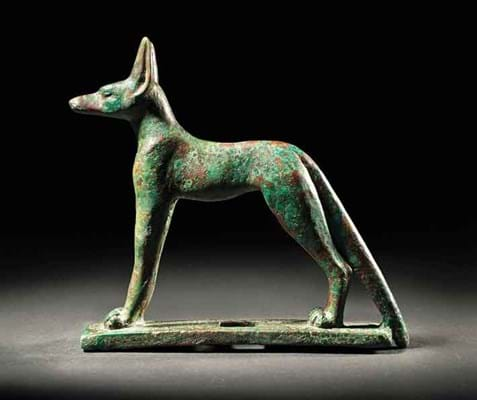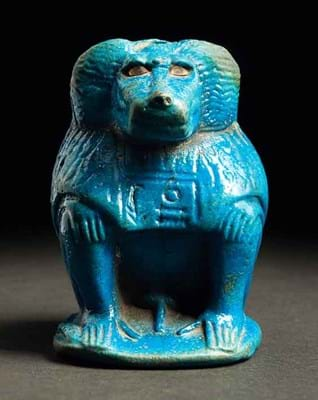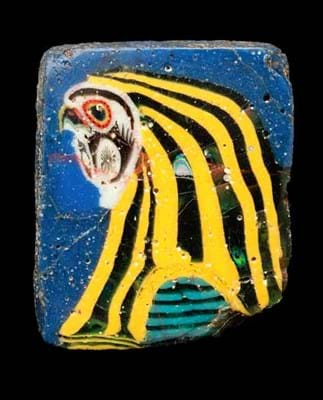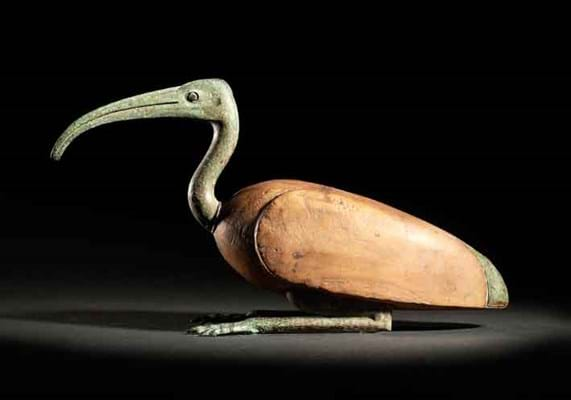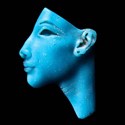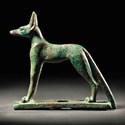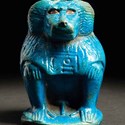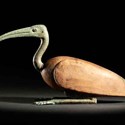Rare mosaic glass dating from the Ptolemaic period (330-30BC), amulets, scarabs and bronze statues attracted both private and trade buyers as well as various institutions.
Formed in the early part of the 20th century by Achille Groppi (1890-1949), the owner of Groppi, the famous café, tearoom and patisserie in Cairo, the 107-lot collection was 97% sold by volume and 99% by value, totalling over £1.5m.
Part of Groppi's ancient Egyptian collection had been offered over two decades ago under the banner of the anonymous 'Per-Neb' collection, when Christie's dispersed some 500 lots split into three sales in 1992 and 1993.
Christie's specialist Georgie Aitken said the decision to name the collection was partially the result of a re-branding exercise, but also because Laetitia Delaloye, the great-great-granddaughter of Jacques Groppi, now works as a colleague of Ms Aitken in the antiquities department.
Much of the material offered on April 26 was new to the market, although a handful of unsold lots from the previous sales resurfaced here. Around three-quarters of the sale consisted of glass inlays - the vibrant pieces having infatuated Achille and dominated much of his collection.
Glass Heads
Topping the price list was a pair of turquoise glass profile head inlays of the Pharaoh Akhenaten with, most probably, his famous Egyptian wife Nefertiti. Offered separately, they both measured just over 1in (2.5cm) high and dated from c.1353-36 BC.
Akhenaten went under the hammer first, and against an estimate of £80,000-120,000 sold to a private buyer for £170,000. The other head sold for £230,000, almost double the same top estimate, to a different private buyer, the link with Nefertiti and the face's refined features proving more sought-after.
A mosaic glass falcon head inlay of the god Horus from the Ptolemaic period c.2nd-1st century BC fetched £70,000 against a £20,000-30,000 estimate. This can be compared to a very similar example offered in Part II of the Per Neb Collection in 1993 that fetched a far more modest £19,000 against a £10,000-15,000 guide.
A Groppi family favourite was the Egyptian wood and bronze Ibis from the c.6th century BC. Estimated at £80,000-120,000, the 20 x 11¼in (51 x 28.5cm) carving fetched its low £80,000 estimate.
Even pieces unappealing to buyers from the earlier sales fetched high sums here despite considerably punchier estimates.
The first was an Egyptian bronze of the god of war and death, Wepwawet in the form of a jackal from the 7th or 6th century BC. Measuring 6¼ x 5¾in (16 x 14.5cm), it almost doubled the top estimate, selling at £95,000 to the European trade.
The second example, known as the Groppi Baboon, represented the moon-god Khonsu, measured 3¾in (9.5cm) and was dated to c.1291-1191BC. It fetched a mid-estimate £80,000.
The third piece, a 4in (10cm) bronze cat head of the goddess Bastet from the 6th-4th century BC, took £30,000 - double the top estimate.
The buyer's premium was 25/20/12%

